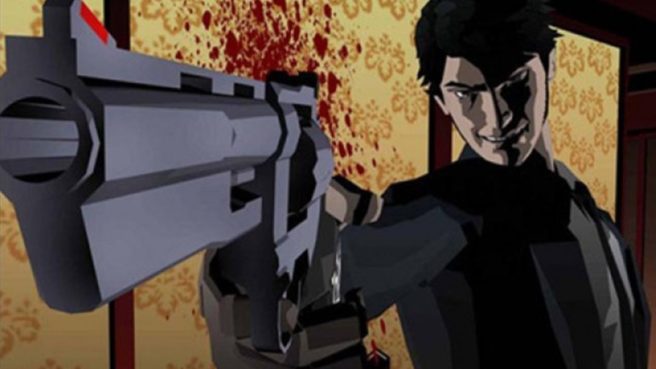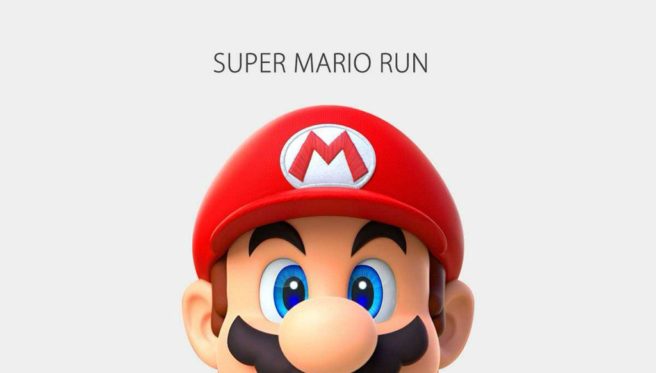Nintendo of Europe Axiom Verge developer interview with Dan Adelman
Posted on 9 years ago by Matt(@OnePunchMaz) in News, Wii U eShop | 0 comments
At gamescom last month, Nintendo of Europe conducted an interview with Dan Adelman, a former employee of Nintendo of America and currently the business partner of Thomas Happ, who created the Metroid-like game Axiom Verge, which is out now on Wii U. The full interview can be found here – below are a couple of interesting excerpts from the interview:
Nintendo of Europe: It sounds like Tom had a very strong vision of what he wanted the game to be from the start. For example, the heads-up display in the game is very minimalist in a similar way to Metroid and other retro games. Is that kind of aesthetic part of the design philosophy for this game?
Dan Adelman: Yeah, I think a lot of Tom’s philosophy in terms of game development is about not overloading the player with information. So, for example, when you start out in Axiom Verge, you start off in the middle of a room, and you can try to go either right or left, and this actually takes inspiration from Metroid. You try to go to the right, and you’re blocked, so you have no choice but to go to the left and then, instead of having a tutorial that says, “Go here. Press this button to jump,” you’re basically in a place where you need to jump and you try all the buttons and you figure it out.
I know he put a lot of effort into teaching the player how to play without making it a tutorial, or writing up a lot of text, and so there were only like one or two places where I remember he struggled. When we brought the game to PAX East, we observed people playing the game. There’s one button – the L Button – that you can hold down in order to lock your position and aim in any direction, and at different events there were a lot of people who just didn’t get it. They didn’t pick it up on their own, so that was one instance where Tom actually had to add in a line explaining how to do it.
NoE: Was it tricky to get the difficulty just right? Did you ever find people saying the game was too tough?
DA: Not too many. I think, at shows when people just pick the game up cold and they don’t know anything about it, they’ll fail a lot and give up too easily. I think when people play at home, and they sit down and try to digest it, they’ll learn pretty quickly.
NoE: It’s got a learning curve like all those classic games.
DA: Yeah, like anything else. One thing I actually really like about the game is that, if you take your time as you’re playing it, there’s usually a way to destroy the enemy in a way that means you’re still safe, or just avoid the enemy entirely.
So if you tried to run right through everything and just keep blasting like in Contra, you’ll probably get taken out pretty quickly, but if you think, “Alright, there’s an enemy up ahead. I’m going to climb up on this platform and shoot down on him. He can’t reach me up here!” If you notice those environmental cues, you can actually make things a bit easier on yourself. It’s only later in the game where you have to fight creatures at close-quarters.
NoE: Does Axiom Verge take advantage of Wii U’s unique hardware features in any way?
DA: Yeah, there are a couple of really important ways. My favourite is the fact that the map is on the Wii U GamePad touch screen at all times. I know that the first time I played Axiom Verge, I had to keep pausing the game to see where I needed to go next. A lot of modern games in this genre will just draw an arrow and say, “Go here next, and then go here next,” and it holds your hand. This game doesn’t do that. You figure out where you need to go next by looking at the map and saying, “Oh, where have I not explored yet? Let’s try to get there”. I was constantly going back and forth, and back and forth. Having the map always available makes it very user-friendly. The other feature, of course, is off-TV play, which is very convenient for people who have to share a TV – they’ll still be able to play!
Source
More: Axiom Verge, Dan Adelman, indie, interview, Tom Happ
Suda51 wants to remake / remaster Killer7
Posted on 9 years ago by Brian(@NE_Brian) in GameCube, General Nintendo, News | 8 Comments
Grasshopper Manufacture made Killer7 for the GameCube and PlayStation 2 in partnership with Capcom over a decade ago. Goichi Suda, known for his work on projects like No More Heroes, directed the game. Now he’s interested in seeing it return.
Speaking with Hardcore Gamer, Suda51 said:
Basically, you are staying faithful to the vision so that new audiences can see it as intended. That’s exciting. Are there any other old works that you have done that you are hoping to revisit, to give this type of remastering treatment?
I feel that Killer 7 is the hardest of my games to play. I want to and feel that I need to do something about that. A remake, or remaster or something like that… (Sly grin.)
More: Goichi Suda, interview, Killer7, Suda51
Producer gives insight into the players of Splatoon
Posted on 9 years ago by Brian(@NE_Brian) in News, Wii U | 15 Comments
Hisashi Nogami, producer of Splatoon, was interviewed in last week’s Famitsu. There weren’t any major revelations, but Nogami did share some interesting tidbits. We now have some news about those who have been playing Splatoon online.
The ratio between Turf War and Ranked Battle players is roughly fifty-fifty. New players tend to concentrate on Turf War while those who have played for long time usually focus on Ranked Battle. The recent update increased point bonuses for Turf War, which perhaps made some people to go back to that mode. Of course, there are also people who have always enjoyed Turf War since launch.
The interview also says that there were many players during the end of 2015 and start of 2016, which may have been due to the holidays and start of the new year. The current numbers have dropped off in comparison, but there is still a stable number of players.
More: Famitsu, Hisashi Nogami, interview, Splatoon, top
Sonic Boom: Fire & Ice director on changes and improvements from the first game, fan feedback, Sonic Bible, more
Posted on 9 years ago by Brian(@NE_Brian) in 3DS, News | 4 Comments
GameSpot caught up with Sonic Boom: Fire & Ice creative director Matt Kraemer to learn more about the game. Much of the discussion pertained to how this title improves upon the original and listening to fan feedback.
Per usual, we’ve rounded up the interesting responses below. For the full discussion, head on over to GameSpot.
More: interview, Mat Kraemer, Sanzaru Games, SEGA, Sonic Boom: Fire & Ice, top
Miyamoto on Super Mario Run – dev timeline, modes, different from console games, pricing, more
Posted on 9 years ago by Brian(@NE_Brian) in Mobile, News | 6 Comments
IGN has now published its full interview with Shigeru Miyamoto about Super Mario Run. Among the responses, Miyamoto touched on when development truly began, the various modes, the fact that it’s a different experience compared to the console games, pricing, and more.
We’ve rounded up the interesting comments from Miyamoto below. You can read IGN’s full article IGN.
More: interview, Shigeru Miyamoto, Super Mario Run, top
Nintendo looking to make Super Mario Run approachable, but also challenging for fans
Posted on 9 years ago by Brian(@NE_Brian) in Mobile, News | 6 Comments
With Super Mario Run, Nintendo will be attempting to attract players who aren’t entirely experienced with Mario titles or games as a whole. However, that doesn’t mean it’ll be devoid of challenge for longtime fans.
Nintendo developer Shigeru Miyamoto wouldn’t divulge what we can expect from Super Mario Run’s later levels. He did say, however, that Mario fans won’t have to worry about easily making it to the end.
Miyamoto teased:
“A big point with this game is, ‘How can we make this a game that people who aren’t good at games can play the game and enjoy it?’ But also at the same time, we’ve been making Mario games for a long time, and we know how to make them challenging. So if you’re a Mario fan, I don’t think you have to worry about that part of it.”
More: interview, Shigeru Miyamoto, Super Mario Run
Miyamoto on why this is the right time for Mario on mobile, Super Mario Run’s debut on iOS, more
Posted on 9 years ago by Brian(@NE_Brian) in Mobile, News | 13 Comments
The Telegraph is the latest outlet to have published an interview with Shigeru Miyamoto about Super Mario Run. Nintendo’s legendary developer touched on why this is the right time for Mario to be on mobile, why the game is on iOS first, and more.
We’ve posted a few notable excerpts from the interview below. The Telegraph has the full discussion here.
More: interview, Shigeru Miyamoto, Super Mario Run, top
Miyamoto says Nintendo is “interested in” amiibo on mobile
Posted on 9 years ago by Brian(@NE_Brian) in General Nintendo, Mobile, News | 0 comments
Thus far, we’ve seen amiibo incorporated into both Wii U and 3DS. The functionality is likely to be integrated into NX as well. But what about smart devices, which Nintendo is now supporting quite a bit?
Shigeru Miyamoto appears to be open to the idea. Speaking with IGN, Miyamoto mentioned: “There’s nothing we can announce today but it’s certainly an area we’re interested in, and today Apple announced some new news about their NFC technology.”
It’s not a confirmation, but that sounds like a very positive response. I wouldn’t be surprised if we see amiibo-supported mobile titles in the future.
More: Amiibo, interview, Shigeru Miyamoto, top
Miyamoto on how Super Mario Run came to be, 3D Mario unlikely for mobile, more
Posted on 9 years ago by Brian(@NE_Brian) in General Nintendo, News | 5 Comments
The Verge is the latest outlet with an interview focused on Super Mario Run. The site spoke with Shigeru Miyamoto, who unveiled the mobile game yesterday. Miyamoto talked about how Super Mario Run came to be, whether we’ll see a Mario game on mobile in which you have full control, and more.
Head past the break for a roundup of Miyamoto’s comments. You can read The Verge’s full piece here.
More: interview, Mario, Shigeru Miyamoto, Super Mario Run, top
Miyamoto still not ready to pursue VR
Posted on 9 years ago by Brian(@NE_Brian) in General Nintendo, News | 25 Comments
Nintendo made a big announcement yesterday by revealing that its biggest IP will grace mobile platforms. In December, Super Mario Run will be out on iOS.
While Mario creator Shigeru Miyamoto acknowledges that having Mario on new platforms can keep him relevant, virtual reality is another story. He feels that the reclusive nature of the technology isn’t a good fit just yet. nintendo also wants people to play “for a long time”.
Miyamoto told USA Today in a new interview:
“I would agree that adapting Mario to new platforms is a key to keeping him relevant. But we want families to play together, and virtual reality (which requires players to be closed off from the real world) doesn’t really fit well there. We also like people playing for a long time, and it’s hard to do that in VR.”







